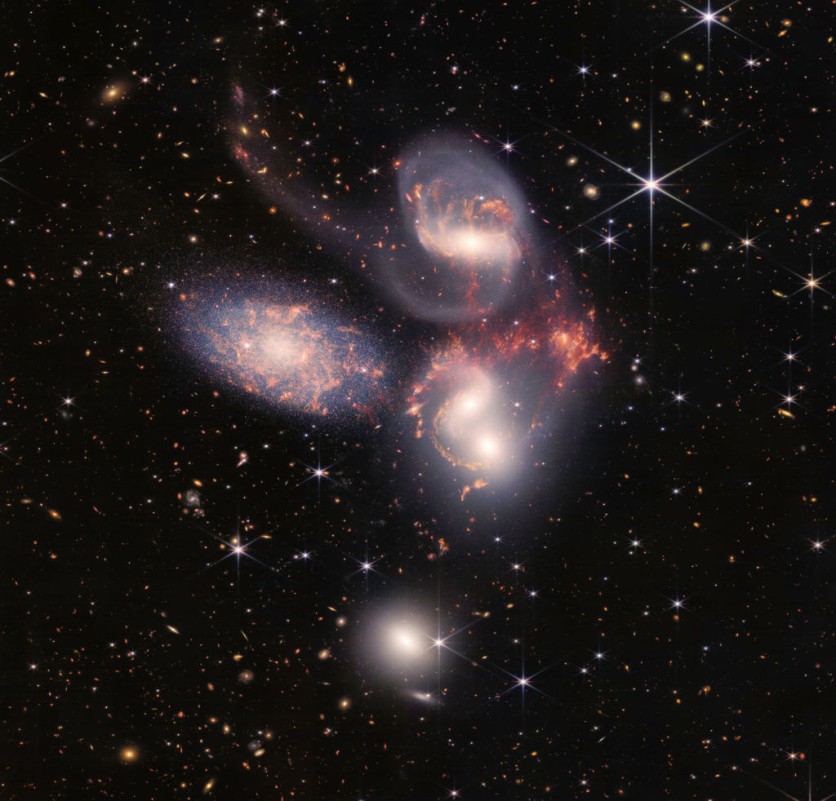NASA's James Webb Space Telescope has captured a breathtaking sight in the depths of space. An international team of astronomers has utilized the advanced capabilities of Webb to observe a luminous dusty star-forming galaxy, known by its scientific designation as GN20.
This remarkable discovery offers a tantalizing glimpse into the cosmic wonders hidden within the universe.

Luminous, Dusty, and Starry!
Situated at a redshift of 4.05, GN20 stands out as one of the most luminous dusty star-forming galaxies known to date. With an infrared luminosity of approximately 18.6 solar luminosities and a star formation rate of about 1,860 solar masses per year, GN20 boasts impressive cosmic credentials.
In an ambitious endeavor to unravel the mysteries of GN20, a group of astronomers, led by the esteemed Luis Colina from the Spanish Astrobiology Center in Madrid, Spain, embarked on mid-infrared observations using JWST's cutting-edge Mid-Infrared Instrument (MIRI).
These observations aimed to shed further light on the intriguing properties of this distant celestial object.
To achieve this, the team obtained Webb imaging of GN20 on November 23-24, 2022, employing the MIRI imager (MIRIM) in the F560W filter as part of the European Consortium MIRI Guaranteed Time.
This carefully orchestrated effort allowed the astronomers to gather crucial data that would shape our understanding of GN20.
The findings from the observations unveiled a stunning stellar structure within GN20. The galaxy's nucleus appeared as a luminous, unresolved entity, possessing an absolute magnitude of -22.35.
Notably, this stellar structure exhibited a continuous and intense star formation rate of approximately 500 solar masses per year over a remarkable span of 100 million years.
Intriguingly, the compact, cold dust nuclear emission coincided with a nucleus that spanned less than 2,600 light years in size, accounting for about 9% of the total flux. Meanwhile, the stellar envelope extended its reach with an effective radius of roughly 11,740 light years.
Although its position aligned with the carbon monoxide molecular gas, its centroid displayed a slight offset of approximately 3,300 light years from the stellar nucleus. This intriguing offset could potentially be attributed to a recent gravitational encounter or merger event, adding a touch of cosmic drama to GN20's narrative.
Faint Stellar Clumps
Further analysis of the JWST images yielded additional discoveries. The astronomers identified faint stellar clumps associated with some of the ultraviolet and carbon monoxide clumps, expanding our understanding of the galaxy's intricate structures.
Additionally, the research team noted that while the stellar nucleus showcased the highest concentration of cold dust, it did not harbor the largest concentration of molecular gas.
The remarkable images and insights provided by the James Webb Space Telescope's observations of GN20 remind us of the immense beauty and complexity of our universe. This research opens doors to further exploration and deepens our understanding of the universe.
The study's findings were published in arXiv.
Related Article : NASA's James Webb Space Telescope Snaps First Asteroid Belt Seen Outside the Solar System





